Program > Symposia
A general overview of the program is available in the "planning" tab and the detailed program can be downloaded here.
The conference will be organized around five different symposia
Ecophysiology in free ranging animals
Invited speaker : Dr. Jonathan Green (Institute of Integrative Biology- University of Liverpool, UK)
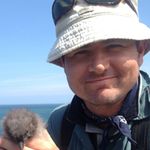 |
Jon Green's interests lie at the interface of the traditional disciplines of ecology, physiology and behaviour. His work focuses on seabirds, as these animals must be adapted to two contrasting environments: the challenges of foraging in a big, deep, cold, dark, distant water body are very different to those they face while breeding and moulting on land. Furthermore, both of these environments and their associated challenges change naturally on a seasonal and annual basis and are under anthropogenic threats from over-fishing, climate change and renewable energy developments. --------------------------------------------------------------------- Ecophysiology in free-ranging seabirds: Insights from energetics approaches Seabirds are the perfect model group in which to study ecophysiology. Firstly their lifestyle compels them to spend time at sea, on the land and in most cases in the air, and these very different environments present a number of simultaneous physiological challenges that they have to adapt to. Secondly, seabirds are the world’s most threatened group of birds, experiencing population declines due to climate change, overfishing, habitat loss and invasive species. For the last 20 years I have worked on projects which have attempted to increase our understanding of how this fascinating group of animals functions in, and is influenced by, their environment using energetics as a common currency to link behaviour, physiology and ecology. From migration in Arctic cormorants to fine-scale decision making in kittiwakes to windfarm interactions in gannets, I will talk about work from the past, present and future that attempts to highlight the importance of understanding ecophysiology in all free-ranging animals. |
Environmental constraints, metabolic flexibility and epigenetics
Invited speaker: Prof. Christoph Grunau (IHPE UMR 5244 - University Perpignan Via Domitia)
 |
Christoph Grunau specific research interest is the role of epigenetics in evolution. The goal of his group is to elucidate the multiple relations between environment, organisms and their fitness in the lab and in the field, in order to understand and control host-symbiont/parasite interactions. He sees inheritance in a broad sense including genetic, epigenetic, cytoplasmic, and holobiont elements that form an inheritance system and brings about the phenotype in interaction with the environment. --------------------------------------------------------------------- A systems biology approach to epigenetic inheritance Evolution is based on the selection of phenotypic variants that must (i) confer a reproductive advantage to the individual, and (ii) are heritable. Heritability has traditionally be though to be exclusively genetic, i.e. based on variations in the DNA sequence. During the last years it became however clear, that a substantial amount of heritable phenotypic variance can be coded by non-genetic means. We have conceptualised this view as a systems approach to inheritance that includes genetic, epigenetic, cytoplasmic and microbial elements. They interact mutually with the environment to give raise to the phenotype. Exemples from our lab will be used to illustrate this concept (parental effects in oyster, adaptation of the human parasite Schistosoma mansoni, and immune memory in invertebrates). |
Invited spealer: Prof. Walter Arnold (University of Vetenary Medecine, Vienna)
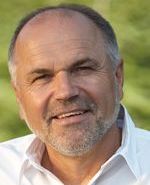 |
Walter Arnold’s research is located at the ecology-physiology nexus. He focuses on seasonal acclimatization including energetics, thermoregulation, hibernation, seasonal and circadian rhythms in ecological contexts. Particular emphasis is placed on the physiological functions of polyunsaturated fatty acids, i.e. how these essential food compounds influence membrane phospholipid composition in interplay with endogenous seasonal regulation. The effects of polyunsaturated fatty acids in phospholipids are studied in a variety of species from hibernators to large mammals on the organismic and molecular level. --------------------------------------------------------------------- Seasonal acclimatization: From the whole organism to the fatty acid composition of membranes Mammals and birds living in seasonal environments face during winter a two-fold challenge: The energetic cost of maintaining a high body temperature is higher at lower ambient temperatures while food availability and quality is poor.Hibernators and daily heterotherms cope with these challenges by switching to fat reserves as the major metabolic fuel, reducing locomotor activity, and, most importantly, by abandoning maintenance of a high body temperature. We found similar reactions in several non-hibernating large mammals, except that temperature changes were only substantial in peripheral body parts. Nevertheless, metabolic rate, approximated by continuous measurement of heart rate, was in these species during winter also remarkably reduced, to about half of the summer level. The reduction of body temperature is in hibernators preceded by incorporation of essential polyunsaturated fatty acids (PUFA) into phospholipids (PL). Upon termination of hibernation, these PUFA are cleared again from PL. First results from red deer suggest that similar remodeling of membranes also occurs in species undergoing only minor seasonal changes of core body temperature. A change of the PL environment apparently can compensate temperature (Arrhenius) effects on membrane-bound enzymes, but with specific roles for different PUFA. For instance, activity of the sarcoplasmic reticulum Ca++-ATPase (SERCA) is increased in membranes rich in omega-6 linoleic acid (LA), a mechanism presumably pivotal during hibernation by ensuring proper Ca++ handling in cardiac myocytes at low body temperatures. In contrast to LA, PL-omega-3 docosahexaenoic acid seems to improve ATP production but has detrimental effects on SERCA. I conclude that seasonal acclimatization, in particular hypometabolism and voluntary hypothermia seem to be ubiquitous among endotherms, as is associated membrane remodeling. Specific effects of PUFA in PL suggest trade-offs determining a state-dependent optimization of the fatty acid composition of membranes. |
Plasticity and individual quality
Invited speaker: Dr. Charlotte Récapet (ECOBIOP UMR 1224, Université Pau Pays de l’Adour)
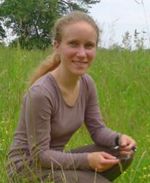 |
Focusing on the level of the individual, Charlotte Récapet seeks to understand the maintenance of the diversity in life-history strategies observed within populations. She is in particular interested in the role of energy metabolism and oxidative stress in mediating life-history tradeoffs and individual responses to environmental variation. Her research, by combining field, experimental and modelling approaches, tests the mechanisms responsible for, but also the demographic and evolutionary consequences of, life-history diversification. --------------------------------------------------------------------- Doing poorly or doing differently? An evolutionary view on individual quality Because of its tight links to medical science, physiology has often adopted a normative view of individual state and classified the deviation from average of individual markers as “healthy” or “pathogenic”. This framework, inherited from the medical need of simple biomarkers for health and disease, has led to the transposition or creation of various physiological metrics into the fields of ecology and evolutionary biology. Although simple to use, such metrics can be misleading, as they are usually too simple to capture the complexity of biological and ecological systems. First, the life of organisms involves complex regulatory systems that make individual biomarkers, taken separately, poor predictors of individual quality. Crude mathematical summaries of these biomarkers, instead of improving our understanding of the biological processes at play, usually obscure them. On the opposite, various approaches have been developed that make a better use of our improved computing capacity to understand individual variation in physiological state and its relevance to individual fitness. Then, a biomarker can show different response according to individual and environmental characteristics, e.g. individual variation in reaction norms. Far from being random noise, this individual variation may relate to evolutionary relevant variation in life-history strategies. Disregarding this source of variation when classifying individuals along a “poor” to “successful” axis will thus often lead to inappropriate conclusions on the ecology and evolution of the species. Adopting a more integrative and individualized view of physiology could therefore help us understand the mechanisms underlying individual variation in life-history strategies and behaviour, but also improve the communication between evolutionary biology and the developing field of evolutionary medicine. |
Anthropogenic activity and conservation physiology
Invited speaker: Prof. Christian Voigt (Leibniz Institute for Zoo and Wildlife, Berlin)
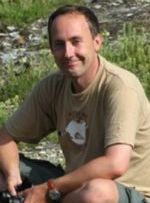 |
Christian C. Voigt is a wildlife biologist who is interested in the functional mechanisms that define the resilience and resistance of animal populations. He studies both proximate (e.g. ecological, physiological) and ultimate (evolutionary) factors. Most often, he use bats as focal species because they are ecologically diverse, have interesting life-history features (longevity, hibernation, powered flight) and because they are important for ecosystems. In his research group at the Leibniz Institute for Zoo and Wildlife Research, they combine field and laboratory work and use various methods, such as stable isotopes, respirometry, endocrinology, immunology, behavioural observations among others, to better understand the ecology, physiology and evolution of wildlife species. In particular, Prof C C Voigt is interested in the question how wildlife species respond to the increasing encroachment of human populations in natural ecosystems. --------------------------------------------------------------------- Anthropogenic activities and conservation physiology In the newly-defined geological epoch of the Anthropocene animals are exposed to a multitude of anthropogenic threats. Indeed, while witnessing the 6th mass extinction event and the disappearance of species in real-time, we are yet at the starting point of understanding the causes that are responsible for the survival or extinction of species. Conservation physiology is pivotal for developing a mechanistic understanding of how e.g. degrading habitats influence animals on the individual, population and species level. Physiological pathways sensitive to sensory stress, nutritional status, chronic hormonal stress and deprived immunology are at the core for understanding and predicting the long-term survival of animals in human-shaped landscapes. In my research, I focus on a taxon that is particularly susceptible towards anthropogenic threats: Bats. Bats are long-lived and highly mobile. They reproduce at a low rate and use torpor to survive adverse conditions. In our group, we studied the body condition, immunology and pathogen load of bats in fragmented rainforests of Borneo to develop a predictive framework that helps to estimate the survival probability of forest species. For example, we found that tree-dwellings bats are more susceptible to chronic stress than cave-dwelling bats in forest fragments, which makes tree-dwelling species more likely to perish from forest patches; probably because they are more dependent on local food resources and thus more susceptible to temporal and spatial fluctuations of food than cave-dwelling bats with larger home ranges. In Europe, some tree-dwelling bat species are migrating annually over more than 4,000 km. As a consequence, they cross a multitude of habitats which exposes them to various threats, including misleading sensory cues from anthropogenic sources, low-quality habitats with reduced insect biomass and an increased mortality risks at wind turbines. In the last part of my talk, I will summarize our recent insights into these anthropogenic threats and assess how they might impact the physiology and survival of migratory bats during their seasonally journeys. Conservation physiology contributes to an understanding of mechanisms underlying biodiversity losses and may thus have the potential to mitigate or even reverse some of the detrimental effects that humans have on animals and ecosystems worldwide. |
Behavioural ecophysiology
Invited speaker : Prof. Wolfgang Goymann (Max Planck Institute for Ornithology, Seewiesen)
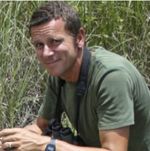 |
Wolfgang Goymann is interested in the interplay between physiology, behavior and ecology and how different environments and life histories shape physiological control mechanisms of behavior. To survive and successfully reproduce, an animal’s morphology, physiology and behaviour needs to be tuned to these environmental conditions. As a consequence animals have evolved myriads of character traits and adopted various life-history strategies to cope with the challenges posed by their environment. Knowing the physiological underpinnings of life histories and the flexibility of physiological control systems to environmental change are key to understanding the impact of human- induced global change on different animal species and populations. With this knowledge we can predict which species may be more likely to suffer from human-induced change. --------------------------------------------------------------------- Male-to-female testosterone ratios, dimorphism and life history in birds – and what may be different about females Testosterone is a key hormone for the development of secondary sexual characters and dimorphisms in behavior and morphology of male vertebrates. Because females often express detectable levels of testosterone, testosterone has been suggested to also play a role in the modulation of secondary sexual traits in females. Previous comparative analyses in birds and fish demonstrated a relationship between male-to-female testosterone ratios and the degree of sexual dimorphism. Furthermore, female maximum testosterone was related to mating system and coloniality. In this presentation, I will re-evaluate these previous ideas using phylogenetic analyses and effect size measures for the relationship between birds’ male-to-female maximum testosterone levels. Further, I will investigated the seasonal androgen response of female birds (the difference from baseline to maximum testosterone), which in males is strongly related to mating system. I could not confirm a relationship between male-to-female testosterone, maximum female testosterone, or the seasonal androgen response of females with most of the previously investigated life history parameters. I will elaborate on why the expectation that testosterone regulates traits in females in a similar manner as in males may be misleading and should be reconsidered, and exemplify this using an example of hormonal factors influencing territorial aggression in sex-role reversed female black coucals. |
The scientific committee consists of local members (DEPE, IPHC):
François Criscuolo
Caroline Habold
Yves Handrich
Sylvie Massemin
Jean-Patrice Robin
Vincent A Viblanc
and external members:
Fabrice Bertile (DSA-IPHC, Strasbourg)
Etienne Challet (INCI, Strasbourg)
Jehan-Hervé Lignot (MARBEC, Montpellier)
Nathalie Mondy (LEHNA, Lyon)
David Renaud (ECOBIO, Rennes)
Yann Voituron (LEHNA, Lyon)
| Online user: 1 | RSS Feed |

|
